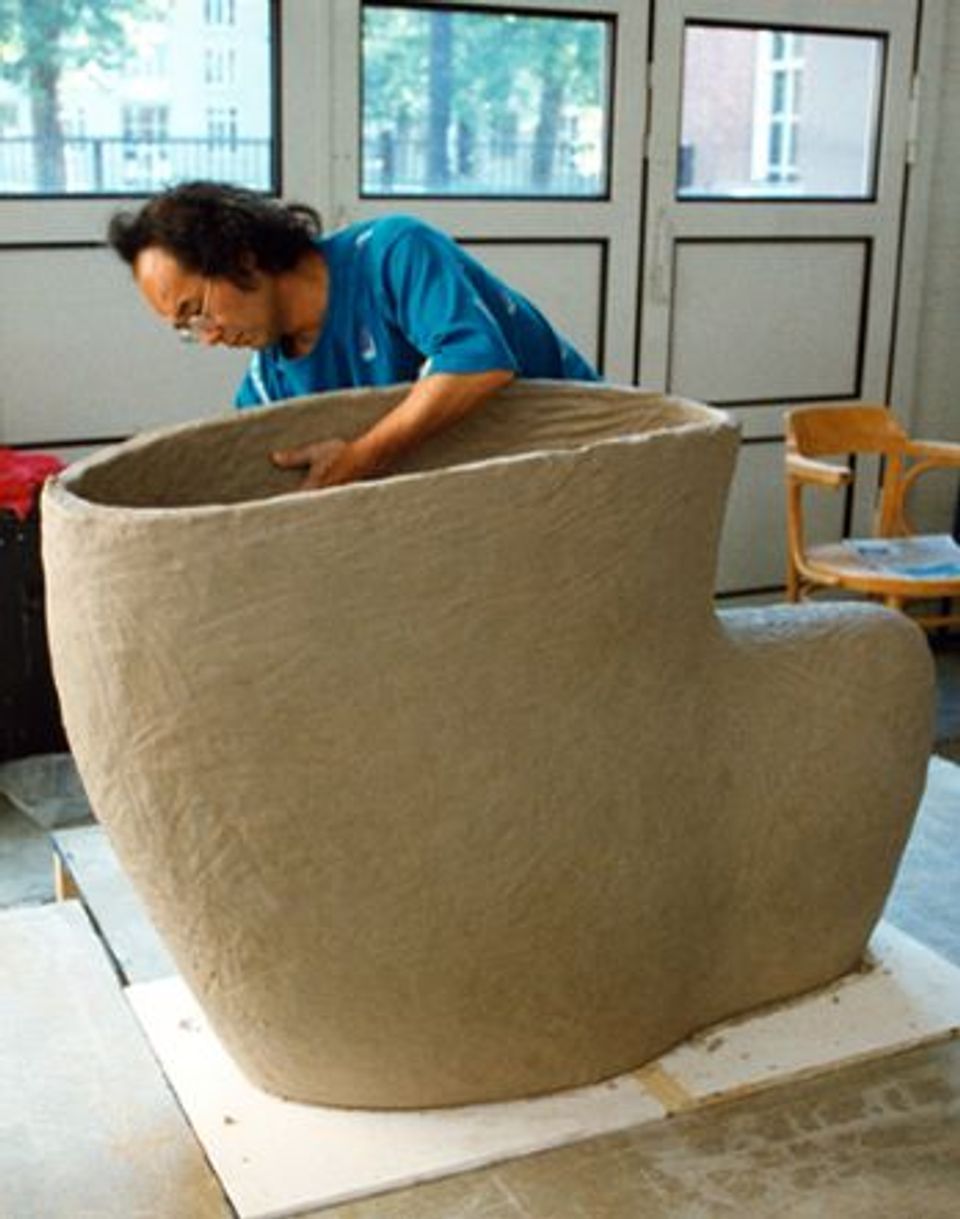Jun Kaneko

- Born
- Nagoya, Japan
- Active in
- Bloomfield Hills, Michigan, United States
- Omaha, Nebraska, United States
- Biography
Since 1969, Jun Kaneko has produced a large body of work in clay that exhibits his primary interest in the effects of repeated abstract surface motifs. Although he restricts his formal vocabulary to a limited number of free-standing sculptural shapes, and to wall-hung plates, the repetitive nature of his surface decoration nonetheless suggests an almost limitless range of visual effects. Kaneko feels compelled to embellish his work: "I almost always have a need to paint on it," he writes.
Using masking tape and colored slips, he covers his free-standing forms and wall-hung pieces with strong graphic motifs—lines, bars, polka dots, zig-zags, spirals, and other geometric markings. Originally trained as a painter in his native Japan, Kaneko is primarily concerned with pattern making, and repeats motifs and patterns to create visual order. The shape of each piece suggests its own particular decoration. "When I can hear what a form has to say," he states; "I start seeing marks and colors on the surface."
The large oval plate is one of Jun Kaneko's most persistent sculptural formats. Its slightly concave surface functions as a curved canvas on which, for years, the artist has developed infinitely variable arrangements of straight, curving, and spiraling lines. Along with wider bands, these narrow lines are painted in yellow, pink, aqua, burnt sienna, and black. The surface patterns of Kaneko's decorated plates reveal his essentially perceptual interests. Through color and texture—as well as alternating glossy and matte, smooth and textured surfaces—he creates a rich visual play of abstract imagery on a three-dimensional surface.
The lighter colored lines on Kaneko's plates naturally advance, while the darker ones recede. This optical effect creates the illusion of space. However, some lines are composed of more than one color, each with a different visual strength, which complicates the figure-ground relationship. Moreover, groups of lines often curve in contrasting directions, creating a rhythmic movement. In some cases, the colorful linear pattern is set against a dark monochrome field. In others, the background itself is composed of a dense pattern of shallow curving lines, alternately black and lighter-toned, glossy and matte.
The optical experience of Jun Kaneko's Untitled plates [1993.54.7 and 1993.54.8] is complex. Nonetheless, the overall visual effect is one of disciplined repose. By reducing his imagery to simple, archetypal symbols of nature, and minimizing the range of his colors, Jun Kaneko has created contemplative ceramic sculptures that celebrate universal aesthetic principles.
Jeremy Adamson KPMG Peat Marwick Collection of American Craft: A Gift to the Renwick Gallery (Washington, D.C.: Renwick Gallery, National Museum of American Art, Smithsonian Institution, 1994)













